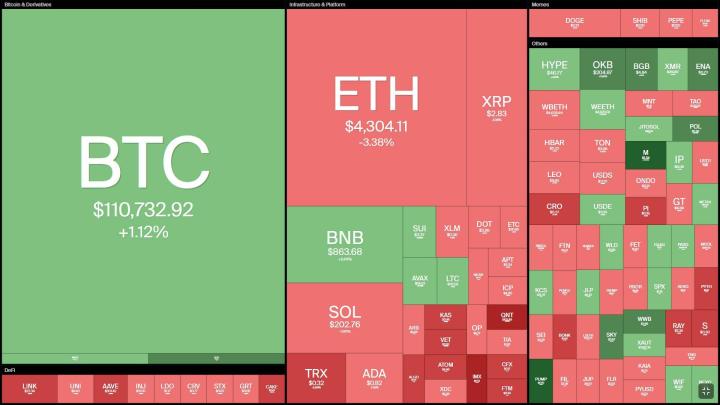The field of Bitcoin liquid staking protocol is growing rapidly, providing holders with ways to earn returns by staking Bitcoin. Protocols allow users to obtain liquidity value in the form of derivative tokens and securely transfer Bitcoin to the Bitcoin Layer 2 network. Well-known platforms include Lorenzo, Bedrock , Botanix , pSTAKE, and UTXO Stack. Nomic and PumpBTC aim to allow holders to benefit from staking and liquidity. Lombard and Chakra are committed to bringing Bitcoin to DeFi , improving security and scalability. The Bitcoin liquidity staking ecosystem provides a variety of DeFi applications and brings returns to holders. As the platform matures, Bitcoin will become a more productive asset.
Original title: The Ultimate Guide To Bitcoin Liquid Staking Protocols
Original author: Lorenzo Protocol
Original source: https://medium.com/
Compiled by: Mars Finance, Daisy

The field of Bitcoin liquid staking protocol is expanding rapidly, as Bitcoin’s technological development has generally progressed faster over the past few years.
Liquid staking protocol built on top of Bitcoin are only less than a year old, but there are already a plethora of staking protocols to consider when venturing into this new space.
To briefly recap, the Bitcoin Liquid Staking Protocol is a system that allows Bitcoin holders to stake their Bitcoin in a way that allows them to earn rewards or yields while still having access to underlying liquidity. Bitcoin is often used to secure Proof of Stake (PoS) networks, but other use cases exist, such as participating in stake-based oracle networks. At the same time, holders can still receive liquidity value equivalent to their staked Bitcoin in the form of derivative tokens.
In addition to enabling Bitcoin holders to generate yield at the underlying layer, liquid staking protocol also allow users to securely transfer Bitcoin to the Bitcoin Layer 2 network, thereby unlocking Bitcoin for use in more flexible forms of decentralized finance (DeFi). As with any other category of DeFi protocols, different liquid staking protocol on Bitcoin tend to focus on different niche features and attributes that differentiate them from other options on the market. In addition, many of the liquid staking protocol on Bitcoin are supported by the creation of Babylon , a protocol that handles Bitcoin staking protocols at the underlying layer of the Bitcoin blockchain.
Currently, some of the most notable Bitcoin liquidity staking platforms are Lorenzo Protocol , Bedrock , Botanix , pSTAKE Finance , and UTXO Stack , but more are popping up every day. Let’s take a closer look at what each of these Bitcoin staking solutions has to offer and how they differ from each other.
Lorenzo Protocol
Main Features
Liquidity staking tokens are divided into income accumulation tokens and liquidity principal tokens
Supports circulation and leveraged staking
Currently focused on Babylon, but can also integrate with other premium Bitcoin staking projects
A simple and easy-to-understand staking process through Bitcoin liquidity staking programs provided by professional providers
No minimum pledge requirement
Released
The Lorenzo Protocol is designed to serve as the primary layer for Bitcoin liquidity funding, facilitating the growing global demand for Bitcoin through innovative Bitcoin 2-layer networks that bring DeFi capabilities to the world's most popular and trusted cryptocurrency. Through Babylon's Bitcoin shared security protocol, Lorenzo can stake Bitcoin liquidity into proof-of-stake chains in exchange for yield.
Lorenzo also takes Babylon’s functionality to the next level by creating an efficient marketplace for Bitcoin holders to find the best investment opportunities for their unused Bitcoin liquidity through its Bitcoin Liquidity Staking Program (BLSP), where projects can outline what staked Bitcoin can be used for and the associated rewards for stakers. Each BLSP details the rules and rewards for staking and has a fixed staking period for consistency.
In addition, Lorenzo tokenizes the staked Bitcoin into Liquid Principal Tokens (LPT), which represent the right to recover the staked Bitcoin principal, and Yield Accumulation Tokens (YAT), which represent the yield generated by the staked Bitcoin collateral. This way, users can easily separate the underlying Bitcoin collateral from the yield generated when using this liquidity in various DeFi applications.
Tokenizing staked Bitcoin into separate LPT and YAT tokens also supports circular and leveraged staking. Circular staking leverages external DEX partnerships to allow users to stake BTC, borrow more BTC, and increase staking rewards. Leveraged staking simplifies the process by providing internal liquidity, allowing users to apply maximum leverage with a single click. Both products are designed to improve capital efficiency and optimize staking returns.
While liquidity staking for Bitcoin is still a new concept, Lorenzo is one of the few products that is already live, at least in a basic form. In addition, Lorenzo has no minimum staking amount as user funds are pooled together, aiming to democratize access to the Bitcoin staking process.
While Lorenzo is currently focused on Babylon, it could technically integrate with any other Bitcoin staking project that emerges.
Bedrock
Main Features
Provide BTC, ETH and IOTX staking
Bitcoin integration is limited to two ERC-20 tokens issued on the Ethereum network
Using Wrapped Bitcoin instead of native Bitcoin will introduce high centralization
Liquid re-staking tokens will not separate principal deposits and earnings
Using Babylon
Bedrock is a multi-asset liquidity re-hypothecation protocol developed in partnership with blockchain infrastructure company RockX. The project’s backers include Babylon co-founder Fisher Yu, IoTeX founder Raullen Chai, and OKX Ventures.
Bedrock is not only focused on Bitcoin, but also allows users to re-stake ETH and IOTX ( IoTeX 's native token). It is worth noting that the Bitcoin integration is limited to users of Wrapped Bitcoin (wBTC) and FBTC, which are ERC-20 tokens backed by Bitcoin on Ethereum. wBTC is re-staked through Bedrock's uniBTC protocol through a partnership with Babylon. This integration allows wBTC and FBTC holders to earn staking rewards on the Ethereum network; however, it is important to note that wBTC is a highly centralized asset as BitGo is its sole custodian.
Bedrock's product suite includes Liquid Restaking Tokens (LRT) for wBTC, ETH, and IOTX. Bedrock leverages the universal (uni) standard to maximize the liquidity and value of these PoS tokens through its uniBTC, uniETH, and uniIOTX products. This universal token model ensures that staked PoS tokens in Bedrock represent not only the principal asset, but also all future staking rewards. The non-rebasing nature of uniTokens means that their value increases over time, not in quantity, allowing holders to benefit from the growing value of each token while also earning additional points from EigenLayer and Bedrock's reward systems.
pSTAKE Finance
Main Features
Powered by Binance Labs
Built on Babylon
Bitcoin cannot be unstaked at this time
50 Bitcoin deposit limit
Liquidity staking tokens will be launched on Ethereum in September 2024
The ability to stake wBTC will be increased
Has its own native token, PSTAKE
pSTAKE Finance is a Bitcoin yield and liquid staking protocol backed by Binance Labs and built on Babylon. The protocol is live now with a maximum staking amount of 50 Bitcoin. However, pSTAKE Finance stakers are currently unable to unstake or withdraw their Bitcoin in the current first protocol version. Additionally, the liquidity staking aspect of the protocol is not yet live, but pSTAKE Finance plans to offer LST on Ethereum starting in September 2024.
Much like Lorenzo Protocol and Bedrock, the pSTAKE Finance platform enables users to deposit their Bitcoin and contribute to the security of various application chains, earning rewards through the Babylon Bitcoin staking protocol. As these PoS chains begin to utilize Bitcoin for security, pSTAKE will manage these earnings and distribute them to users.
Looking ahead, pSTAKE Finance plans to launch their V2, when yBTC LST will be launched on Ethereum. This new token is designed to provide automatically compounded Bitcoin yields and will eventually be integrated into the major DeFi ecosystems of various blockchains. The protocol is committed to expanding its yield products and making Bitcoin more accessible, including the option to stake wBTC and other Bitcoin derivatives.
In addition, pSTAKE Finance is focused on developing its token economics and launching a fully self-custodial Bitcoin yield solution, ensuring security and accessibility for users. pSTAKE Finance also has its own native governance and incentive token, PSTAKE.
Swell Network
Main Features
**Non-custodial Staking:** Swell allows users to stake WBTC directly from a non-custodial wallet, ensuring full control of their assets.
**Yield Generation:**swBTC generates yield through re-staking protocols such as Symbiotic, EigenLayer, and Karak.
Liquidity: swBTC can be used as collateral in lending protocols
Swell Network , traditionally an Ethereum liquidity staking platform, recently launched a Bitcoin liquidity re-staking token called swBTC. This ERC-20 token provides liquidity to users who want to stake Wrapped Bitcoin in protocols such as Symbiotic, EigenLayer or Karak without locking up assets. With swBTC, users can earn native yields from the re-staking platform while leveraging the token across the DeFi ecosystem.
UTXO Stack
Main Features
Backed by ABCDE, OKX Ventures, CMS Holdings and Matrixport
Sticking to Bitcoin’s roots and adopting the UTXO model
Integration with RGB++ protocol
Also integrated with the Nervos Network, so not just a Bitcoin-only solution
UTXO Stack provides developers with a technical framework that enables them to easily release Bitcoin Layer 2 solutions using the Unspent Transaction Output (UTXO) architecture. Notably, Bitcoin itself differs from most other Layer 1 cryptocurrency networks in that it uses this UTXO-based model instead of the more popular account-based setup. The Bitcoin Liquid Staking Protocol is backed by prominent cryptocurrency investors including ABCDE, OKX Ventures, CMS Holdings, and Matrixport.
UTXO Stack integrates the RGB++ protocol to enhance the security of the Bitcoin Layer 2 network through a combination of re-collateralized Bitcoin, CKB (the native cryptocurrency of the Nervos Network), and Bitcoin L1 assets issued through RGB++. UTXO Stack attempts to become the " OP Stack + EigenLayer " of the Bitcoin world.
UTXO Stack's adoption of RGB++ is its most unique attribute. Unlike many existing solutions that rely heavily on Ethereum EVM and bridging mechanisms, UTXO Stack and RGB++ maintain a close connection with the Bitcoin main chain and UTXO model. RGB++ allows assets to be issued and managed on Bitcoin, with transactions executed on the Nervos Network and recorded as commitments on Bitcoin. A major benefit of this approach is that it enables efficient "transaction folding" to reduce fees. Of course, integration with the Nervos Network will put off many Bitcoin purists.
Nomic
Main Features
Plans to collaborate with Babylon
Has an LST called stBTC (may be confused with Lorenzo’s product of the same name)
Has its own native token NOM, which is used to protect its layer 1 network
Bitcoin and NOM will provide dual staking
Working in the Cosmos Ecosystem
Nomic is a Layer 1 blockchain network that operates within the larger Cosmos ecosystem. Cosmos aims to create a more unified cryptocurrency ecosystem through interoperability across multiple blockchains, in addition to a viable scaling roadmap that involves separate chains for different specific use cases.
The Nomic DAO Foundation plans to incorporate Babylon's Bitcoin staking protocol into its decentralized, non-custodial Bitcoin bridge. The integration will introduce an LST called stBTC, allowing Bitcoin holders to benefit from staking and liquidity. Nomic will enhance its security model with dual staking support, leveraging both staked Bitcoin and its native token NOM.
By leveraging Babylon's technology, stBTC will enable Bitcoin holders in the Cosmos ecosystem to earn yield while maintaining liquidity for use in Inter-Blockchain Communication (IBC) compatible DeFi protocols. Nomic's approach allows real Bitcoin to be exchanged for nBTC tokens, which can be freely transferred between IBC-compatible chains. These nBTC tokens are backed by real Bitcoin in reserves controlled by NOM token holders, who are also validators of the Nomic chain. Through this system, users can stake nBTC to mint stBTC. Staking rewards will be distributed through IBC inter-chain account transactions.
stBTC is currently available on the testnet, allowing users to explore its functionality ahead of its official mainnet launch.
PumpBTC
Main Features
Built on Babylon
The current version uses WBTC, BTCB, and FBTC on alternative layer 1 networks
Partnering with cryptocurrency custodians Cobo and Coincover
Smart contract audit performed by BlockSec
PumpBTC points can get additional rewards
PumpBTC plans to provide a liquidity re-staking solution through Babylon. PumpBTC aims to simplify and improve the returns for Bitcoin holders, allowing users to stake their Bitcoin and receive liquidity tokens immediately, bypassing the usual waiting period. Much like the other projects on this list, its goal is to connect the worlds of DeFi and Bitcoin, and PumpBTC describes itself as an effective alternative to WBTC, providing a native yield-based Bitcoin for the DeFi ecosystem across multiple blockchains.
Currently, PumpBTC allows users to deposit their Bitcoin for staking via various Bitcoin-derived tokens issued on alternative layer 1 networks such as Ethereum and Binance Smart Chain. Additionally, PumpBTC does not handle user funds directly, as this aspect of the protocol is handled by custody partners Cobo and Coincover. While the PumpBTC smart contracts have been audited by blockchain security firm BlockSec, this heavy reliance on multiple layers of third-party custody may put off many Bitcoin purists who prefer to adhere to the principles of decentralized and permissionless finance. Nonetheless, PumpBTC claims that they will eventually add the ability to directly stake native Bitcoin to the protocol.
In addition to the yield that PumpBTC users can earn from their staked Bitcoin through the Babylon integration, users can also earn additional rewards through PumpBTC Points. That being said, the exact future utility of these points is unclear at this time. In terms of total rewards, Bitcoin stakers can earn their base staked annual percentage yield (APR), Babylon Points, PumpBTC Points, and FBTC Points on one platform, with more rewards expected to be added in the future.
Lombard
Main Features
Backed by notable industry leaders including Franklin Templeton Investments and Polychain Capital
Based on Babylon
Currently focusing on making LBTC the main way to use Bitcoin in DeFi
Earn Lombardy Points in addition to Babylon staking rewards
Backed by a security alliance of DeFi industry leaders
Currently in private beta
Lombard aims to establish a universal standard for Bitcoin and is supported by ecosystem partners. The main focus of the protocol is to allow yield-generating Bitcoin to move seamlessly across chains without disrupting liquidity, potentially bringing a large amount of new untapped capital into DeFi.
Lombard's core product, Liquid Bitcoin (LBTC), provides 1:1 backed, yield-generating, cross-chain liquid Bitcoin, allowing holders to retain access to their capital while actively participating in DeFi activities such as staking and trading. Currently in Phase 1 on the Ethereum mainnet, Lombard is in private testing, where some users can stake Bitcoin and mint LBTC. In Phase 2, Lombard will open LBTC to the public, with deposit caps and waitlists to manage demand and reward early participants.
The governance and promotion of LBTC is also supported by the Security Alliance, whose mission is to highly integrate Bitcoin tokens into existing DeFi protocols and blockchains. However, Lombard has not yet announced the specific members of the Security Alliance.
Bitcoin holders can earn a range of benefits through Lombard, including PoS staking, Lombard rewards, and DeFi opportunities. Other DeFi protocols can also benefit from LBTC by creating new yield primitives, and target blockchains may see a large amount of new liquidity, with billions of dollars of Bitcoin being integrated into applications on these DeFi-focused chains.
Lombard's mission is to position Bitcoin as not only a store of value, but also a key player in DeFi that can be used to earn, stake, trade, and transfer at scale. Their vision is to see Bitcoin as a universal DeFi primitive, as the best collateral for the entire ecosystem, and provide enhanced security for PoS networks through Bitcoin-backed stability.
Chakra
Main Features
Providing Bitcoin re-staking
Based on zero-knowledge proof, self-custody staking is realized
Creation of ChakraBTC and ChakraETH
Chakra Chain acts as a middleware chain between Bitcoin and its Layer 2 network
As a Bitcoin re-staking protocol, Chakra seeks to unlock the full economic potential of Bitcoin by leveraging advanced zero-knowledge proof (ZKP) technology to secure new chains and applications. The core challenge Chakra solves is how to allow Bitcoin holders to benefit from staking returns without compromising the custodial security of staked Bitcoin. This is achieved through Cobo's Babylon-driven self-custody and MPC-driven custody (multi-party computation).
Chakra provides a unique solution by enabling self-custody staking, allowing Bitcoin holders to stake their assets without having to move them out of their wallets. Timelock scripts are also a building block of the Lightning Network and are used to eliminate third-party risks sometimes associated with the staking process. Chakra also employs ZKPs, specifically Scalable Transparent Arguments of Knowledge (STARKs), to improve the security and scalability of the system.
Additionally, Chakra supports a range of services maintained by stakers, including applications in AI, DeFi, and gaming. It facilitates the creation of new Bitcoin layer 2 networks and the development of DeFi Bitcoin-backed derivatives, expanding the utility and yield opportunities for Bitcoin holders. Most importantly, Chakra users are able to stake on a variety of different networks simultaneously using the same collateral through Bitcoin re-staking.
Chakra describes itself as a modular settlement network for the Bitcoin DeFi ecosystem built around a variety of different layer 2 networks. It is also interoperable across various layer 1 networks, with a focus on creating an aggregated financial layer that can unify Bitcoin liquidity across the space. The Chakra chain effectively acts as a middleware between the base Bitcoin protocol and any blockchain that wants access to secure Bitcoin liquidity.
Solv Protocol
Main Features
Investors include Binance Labs and Blockchain Capital
UTXO-3525 supports cross-chain non-custodial Bitcoin swaps
Release SolvBTC as a unified Bitcoin liquidity asset
Supports Bitcoin, Ethereum, BNB Chain, Botanix and many other blockchains
Audited by five independent firms
Compliance Bridge supports participation of traditional finance
Solv Protocol aims to build a decentralized Bitcoin reserve that can be deployed across the DeFi space, which they call "BTCFi." Through their SolvBTC token, they are focused on unifying Bitcoin liquidity into one asset that can be used across all staking and other DeFi applications.
A long list of high-profile investors back the Solv Protocol, including Binance Labs, Blockchain Capital, CMS Holdings, and Bing Ventures. Additionally, the protocol has undergone five independent security audits from firms including Quantstamp, CertiK, and others.
From a technical perspective, the three key aspects of Solv are the Liquidity Consensus Network (LCN), UTXO-3525, and the Compliance Bridge. The Liquidity Consensus Network manages the decentralized Bitcoin reserves held in the Solv protocol through transparent, auditable records and cross-chain liquidity management. UTXO-3525 is a protocol for transferring assets from the base Bitcoin blockchain to EVM-compatible blockchains. In addition to native Bitcoin, UTXO-3525 can also handle Ordindals, Runes, and other assets issued on top of Bitcoin. The Compliance Bridge is used to enable traditional financial institutions to participate in the protocol while complying with their regulatory obligations. This includes the ability to tokenize a US spot Bitcoin exchange-traded fund.
Currently, Solv Protocol has two independent LSTs in the form of SolvBTC.BBN for Bitcoin staked through Babylon and SolvBTC.ENA for Bitcoin staked through Ethena . In addition, Solv plans to implement Bitcoin yield opportunities through Ethereum, Binance Smart Chain, Botanix, and some other blockchains.
Acre
Main Features
Has a governance token called ACRE
Built on tBTC decentralized Bitcoin bridge, not Babylon
Bitcoin stakers receive stBTC LST
Users can also earn Acre points
Currently running on Ethereum
Planned integration with Mezo Bitcoin Layer 2 network
As the liquidity layer of the Bitcoin Layer 2 network, Acre provides Bitcoin deposit and Bitcoin withdrawal staking services. When Bitcoin is deposited into Acre, it mints stBTC, an LST that can be redeemed 1:1 for Bitcoin. The deposited Bitcoin is then invested in various yield-generating strategies on the Bitcoin Layer 2 network and DeFi platforms, and the rewards are accumulated in the stBTC token. This includes using the underlying Bitcoin as a proof-of-stake asset to provide security for the Bitcoin Layer 2 network. The stBTC token contract is currently deployed on Ethereum. It will not be repriced based on its accumulated earnings, which means that the value of stBTC should increase over time, not the amount of stBTC held by users.
Notably, Acre uses tBTC, a secure, decentralized Bitcoin bridge that connects to Ethereum and other EVM-compatible blockchains. This is in stark contrast to other Bitcoin-backed tokens issued on EVM chains, such as WBTC, which are completely centralized. Bitcoin deposited into Acre through the underlying blockchain is converted to tBTC before being staked. tBTC is backed by leading DeFi projects and plays a vital role in enabling cross-chain coordination and enhancing the functionality of Bitcoin within the Acre system.
Acre is managed by a decentralized autonomous organization (DAO) and operates under the governance of users who hold ACRE tokens.
The current state of products
When examining the various liquidity staking platforms discussed, common themes and distinctions set each platform apart.
Flexibility and cross-chain integration
Most platforms emphasize cross-chain compatibility, allowing users to interact with multiple blockchain networks. For example, Chakra supports cross-chain liquidity flows, while Lombard supports staking across various networks, increasing users' opportunities to earn yield. Similarly, Swell introduced a re-staking feature that enables Wrapped Bitcoin holders to take advantage of liquidity.
Revenue optimization and reward mechanism
All major platforms focus on generating yield, but Lorenzo Protocol stands out with its leveraged staking option. It enables users to maximize their yield potential by using staked Bitcoin as collateral to borrow more BTC for further staking. Lombard and Bedrock offer higher yields through partnerships, while PumpBTC combines real-time staking transparency and point aggregation to unlock additional rewards.
BTCFi’s bright future
As the Bitcoin liquidity staking ecosystem rapidly evolves, various protocols present exciting opportunities and unique capabilities.
These innovations enable Bitcoin holders to earn returns while maintaining liquidity, opening the door to a diverse range of DeFi applications in the Bitcoin ecosystem. The diversity of Bitcoin liquid staking protocol not only enhances user choice, but also stimulates further innovation in the Bitcoin DeFi space.
Looking ahead, the growth of Bitcoin liquid staking protocol will redefine how Bitcoin holders interact with the broader blockchain ecosystem. As these platforms mature and expand, they are expected to unlock greater functionality and accessibility, making Bitcoin a more versatile and productive asset.
Since this space is still in its very early stages and many protocols have yet to launch, it is crucial to follow the latest developments in this new area of Bitcoin expansion. That being said, the number of new projects in this space indicates that there is a bright future for earning yield through Bitcoin staking.







